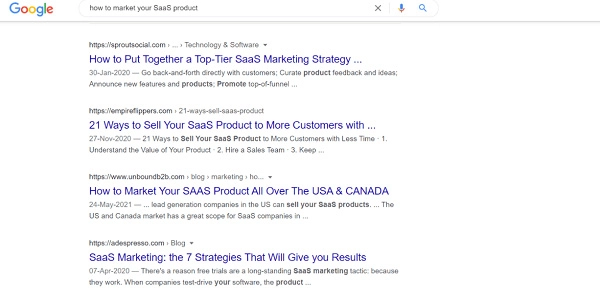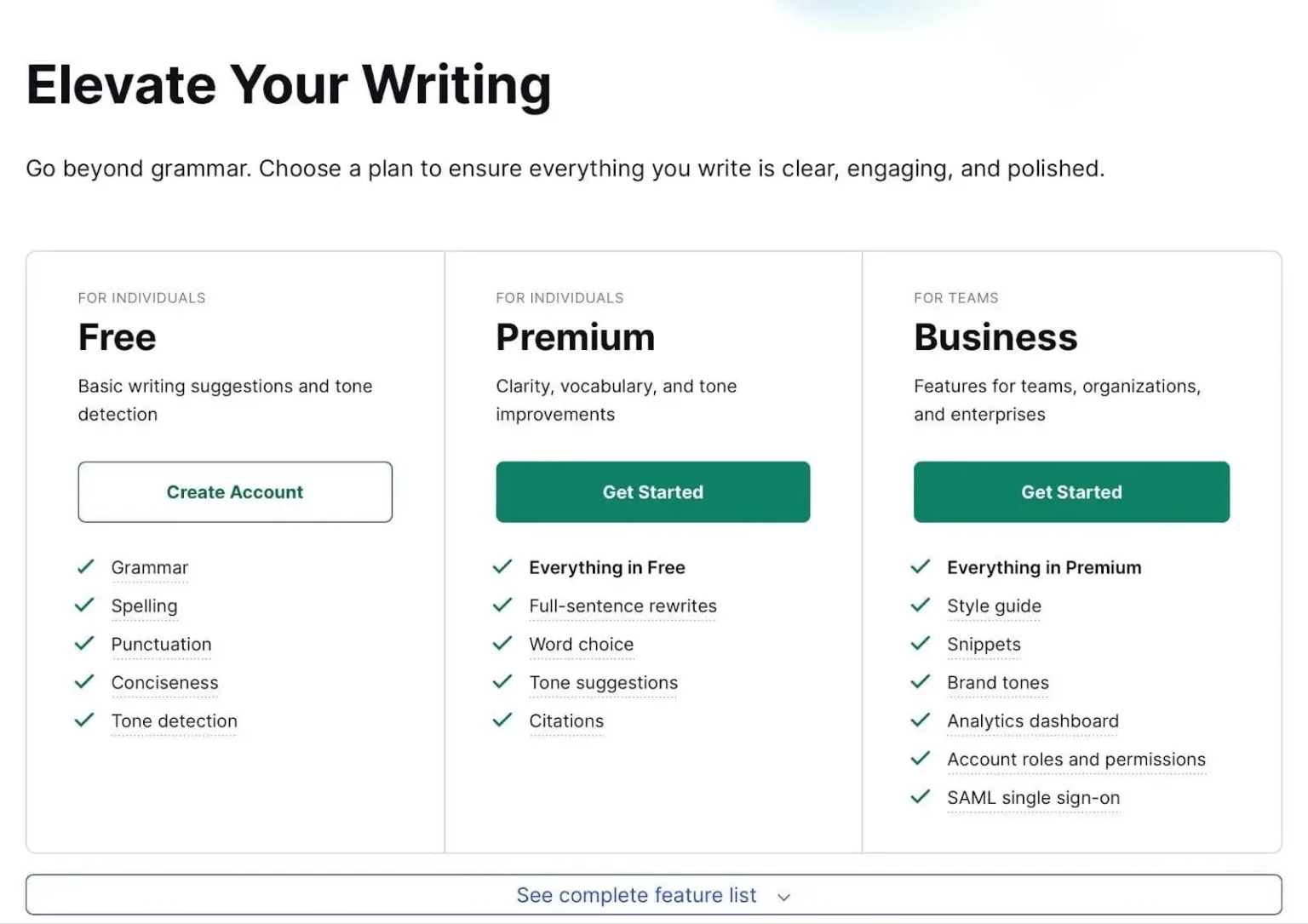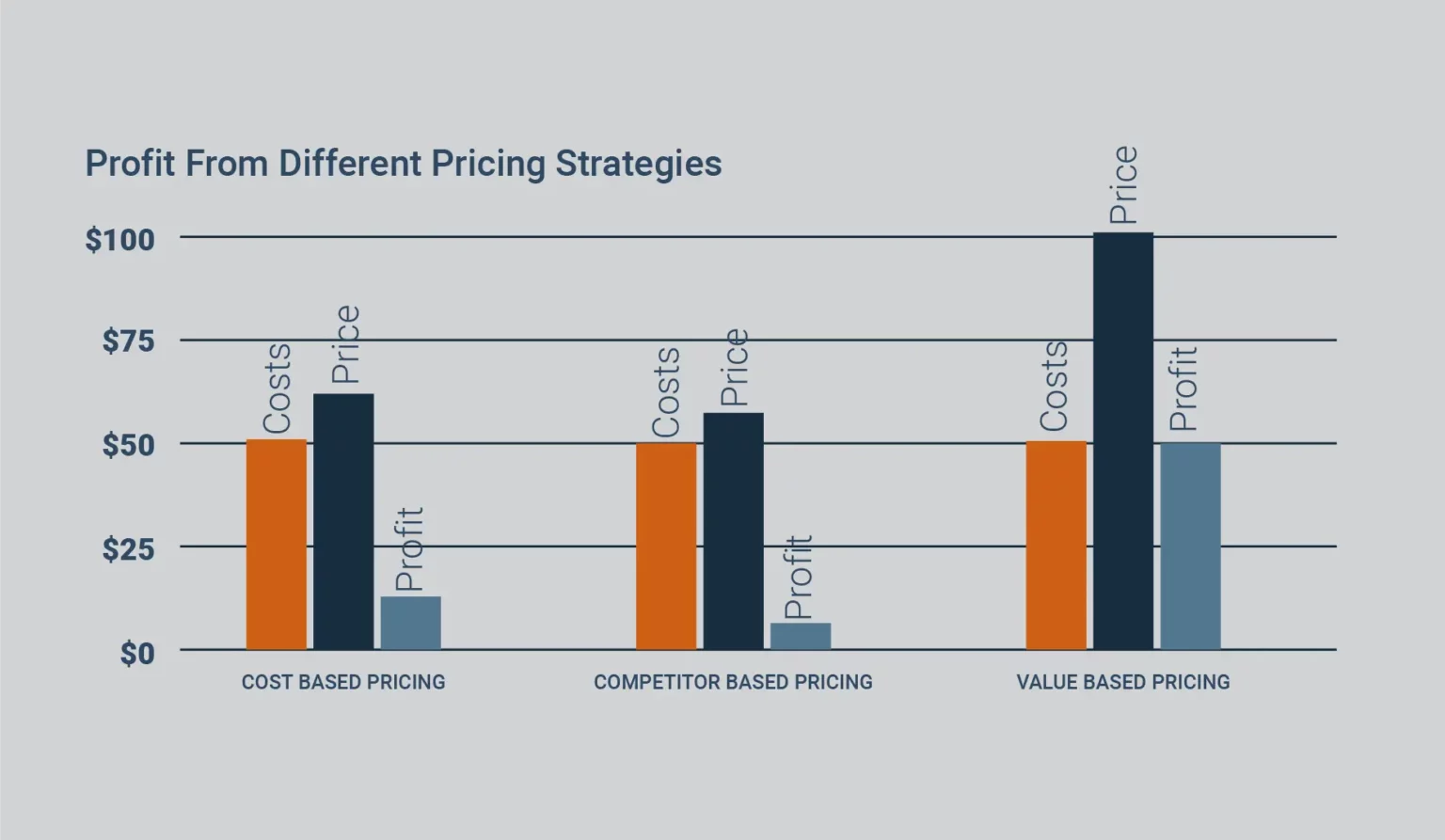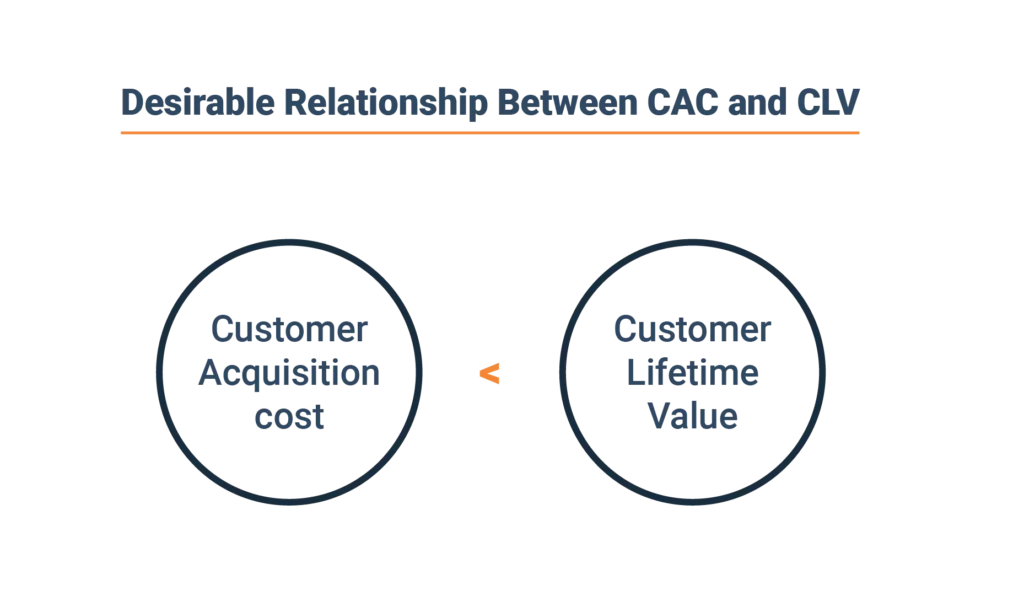
Introduction
The average business should expect over half of its software stack to be replaced within the next two years. And this trend is only expected to continue.
When it comes to drafting a marketing plan for SaaS, there’s a whole new set of rules you need to follow. Prospects do a lot of their research and shopping online, so getting them to sign up for free trials and demonstrations is critical.
Even when you’ve completed a sale, the work doesn’t stop there: onboarding, churn rates, growth hacking, and a slew of ROI calculations are all part of the complicated terrain that SaaS marketers require to navigate.
Tight competition has created a fast-growing, high-volume, and fragmented SaaS industry. Building and managing high-quality relationships is a challenge. Sales and marketing teams need to be more diligent than ever to build strong customer relationships.
A successful SaaS marketing plan is largely dependent on laying solid strategic foundations.
This blog will draw on our experience dealing with SaaS organizations as we share critical lead nurturing insights. Let’s start with the basics.
What Is SaaS Marketing
SaaS marketing is a very specific form of B2B software marketing that focuses on promoting a subscription-based SaaS product.
Unlike companies that sell physical goods or make one-time purchases, SaaS companies provide an intangible commodity. It must constantly prove to its existing (and potential) clients that their rented
or subscription service is worth the monthly charge.
If you have successfully managed to grow your business, it is now time for you to acquire more customers through SaaS marketing.
SaaS Marketing Plan vs Traditional Marketing
Building a SaaS business is harder than selling a physical product. After all, it is easier to convince people to buy a paper shredder than to get them to adopt your software into their daily workflow.
Also, there’s no way to convince someone they need your service if they don’t already know they need it or believe it’s possible. That makes selling Software as a Service (SaaS) a whole new challenge to accommodate a marketing plan.
Though the SaaS (software-as-a-service) sector is sometimes grouped with
business-to-business enterprises, its niche—creating and administering software applications—means it functions much differently than other B2B companies.
Their sales cycle usually follows a three-step process:
- Acquisition: Getting new users onboard.
- Monetization: Converting those users into paying customers.
- Retention: Persuading a paying customer to stay with you.
SaaS companies are likely to utilize a more specialized funnel known as the AAARRR funnel or pirate funnel to nurture their tech audience. As opposed to the traditional funnel, which is more acquisition-focused, a SaaS marketing plan focuses on the lead lifecycle, and what occurs after the initial purchase.

The AAARRR funnel, coined after the abbreviations for each of the stages, focuses on creating a lead and maintaining and monetizing that customer—both of which occur after the initial purchase process.
For example, a SaaS company that offers free or freemium services in their activation stage with some limited functionalities they have to convert all of these users to a premium account to make a profit. Retention rate plays a crucial role here.
Businesses have to look after the return on investment (ROI) numbers too, which usually reflects a few weeks/months after a purchase is made.
The Components of a SaaS Marketing Plan
So, what constitutes a solid SaaS marketing plan? You can utilize the following components as the guide to a successful SaaS marketing plan for your business.
1. Craft Your Buyer’s Persona.
In marketing speak, a buyer persona is a representation of how your ideal customer will behave. It is a hypothetical representation of the characteristics, activities, and livelihoods of your customers. It is effectively your target audience that will help you make better decisions, improve engagement, and boost conversions.
Done right, your buyer persona is a valuable tool that will help you understand your target audience on a deeper level.
These insights will allow you to write more targeted copy that resonates deeply with potential customers, thus providing you with better returns on the investment that you’re making in SaaS marketing.
One of the most common misconceptions of SaaS startups is creating too many buyer personas. Let’s make this easy for you.
The key to any marketing plan for SaaS companies is to start with one of the best customers and create content aimed at making that customer your ideal client.
You can start by creating personas that capture the experiences of your ideal target customer and figure out what problems are important for them.
Your audience wants to learn how your product or service can solve their problem. How does it fit into their lives? How can it improve their life in some way? Take note!
2. Create Content That Your Audience Can Relate To.
If you’ve got a SaaS product, you need to understand that your target audience has been inundated with similar messages. Your prospects already know that they can use the internet to find almost any information that’s relevant to their interests. In fact, 57%-70% B2B buyers do full online research before contacting sales teams.
This means that you either have to produce information and content that is timely, value-oriented, and actionable—or get out of the way so someone else can step in and do it for you. There are no exceptions to your marketing plan.
Take a look at what comes up when you search for
how to market your SaaS product


UnboundB2B have all resources to guide consumers in achieving their objectives. We help businesses optimize their content marketing plan based on their customers’ pain points and trending issues. We use our database and analytical software to guide our clients with personalized content marketing strategy.
Each component of these results is optimized for lead nurturing and lead generation. After all, that’s the primary goal of an ideal SaaS-based marketing plan.
However, if you want this approach to work for your business, you’ll need to do more than just produce a blog post every few weeks.
With content marketing coming into the picture, a good SaaS product with a good content marketing strategy is no longer enough. The new age of traction requires brands to be willing to put in the time it takes to find unique angles for their brand.
3. Attract Leads With Freemiums
While traditional marketing was designed with lengthy sales cycles and larger up-front expenditures, SaaS is about delivering product marketing and services in a flexible way to customers.
It works on subscription-based pricing models, which means that instead of paying a flat fee for a piece of software upfront, the customer pays a regular fee on a monthly or yearly basis.
So, to have a thorough understanding of how the product works before committing, SaaS providers offer trial periods that give them access to the software without charge.
In fact, one of the best lead generation methods for SaaS marketers to create leads and increase conversions is with a free trial.
Some companies sell their subscriptions through demos and trials indefinitely as part of their marketing plan – but with limited functions. Others rely on product demonstrations and never provide full access to their solution before they become paying customers.
Grammarly is the best case study in this context. They offer a free trial, the free version with limited features and monthly/quarterly/yearly subscription runs. They offer a versatile range of pricing options and demos to their customers. It helps them to target customers’ belongings from different groups.

4. Nurture Leads to Become Subscribers
Everything about lead nurturing is designed to help you work with your leads, not against them. With a strategically planned lead nurturing funnel, you’ll slowly introduce your brand to your audience, increasing the chances that when they’re ready to become customers, they just might think of you first.
Nurturing for a SaaS product is much different than a traditional product. So, when it comes to the former, customers get a clear timeline, i.e. till the free trial ends.
But, if the trial ends without any new action, the likelihood of no conversion is high. But, a good marketing plan can help you turn the table around.
For example, you can keep shooting emails to your customers during the trial period about the additional premium features they are missing out on. You can also send emails that establish your brand as a thought leader in your niche. Including links to blogs and webinars that cover similar themes works too.
By the end of the trial period, it is a good practice to schedule sales calls, given the customer’s expected commitment.
5. Retain Your Subscribers
Retention leads to profitability, so reducing churn is the primary strategy for a profitable business.
What is the best way to retain your customers? Here is a list of some best practices for your ideal marketing plan.
User journeys should be mapped out and benchmarked. Create a path that will lead them through crucial elements and assist them in achieving their goal.
Never stop educating your customers
Even after consumers have been onboarded, you should continue to educate them. Provide clients with helpful insights, training, and instruction so they can get the most out of the product.
Use multiple channels to communicate
Catch them in the right place at the right time. For example, phone calls could be used to engage existing enterprise customers with extra attention. SMS can be sent very close to a customer’s contract expiration date to drive an immediate action out of them.
Reassert your value proposition
In case the customer forgets, remind them of it. A value proposition that attracts a customer should be the same value proposition that retains the customer.
Upsell
SaaS upsells are a powerful way to increase profits with existing customers. After the initial sale, you can offer them more support, special training, or extra features for more money in your marketing plan. Many times, customers do not mind paying extra, provided you are not ripping them off.
Schedule regular interactions
Stay in touch with your SaaS customers. The more frequently you can do so without coming off as aggressive, the more likely you are to retain a good percentage of these customers.
Introduce a loyalty program
A loyalty program shouldn’t cost a lot and should be easy to administer in your marketing plan. Giving your customers a little discount from time to time can go a long way towards encouraging engagement.
Exceptional customer support
Most customers won’t contact you with a problem unless they’re feeling the pressure. So, monitor support ticket volume and look for other patterns to see what is causing pain for your customers. Either prevent it from happening in the first place or deal with it as soon as possible.
6. Experiment With Your Pricing.
Pricing is one of the most vital components of marketing for almost any kind of company, but it’s especially true for SaaS companies. Traditional marketing wouldn’t normally consider pricing in an ideal marketing plan, but it is definitely part of the overall strategy within the SaaS model.
The majority of businesses don’t spend enough time on their pricing strategy. But the right strategy can help you retain more customers.
There are all sorts of different ways you can offer a subscription to your SaaS software. Many SaaS founders will opt for month-to-month payment plans, while others may prefer to explain that their software is more affordable up-front and then encourage customers to break the contract if they aren’t completely satisfied.
For example, you could offer your SaaS product free for the first 14 days, then start charging from the 15th day. Or you could make your trial last 30 days instead of 14.
An alternative is to give your customers the first month free and then increase the price. But that would risk the increase of customer churn in your marketing plan.
Similarly, if you are a SaaS company trying to get users to switch from a monthly plan to an annual plan. Offering a
free month
may be more effective than offering 10% off the renewal price, even though the latter is technically a better deal.

7. A Referral-Based Marketing Plan.
Add a referral-based marketing plan to your software that allows your customers to spread the word about how great your product is. Perhaps they can even collect a discount for each customer they refer.
According to AppVirality, buyers are four times more likely to purchase a product if they hear about it from a friend, and their lifetime value is 16% higher. Rewards points, loyalty programs, and discounts are all effective ways to acquire new customers. Thus, if you implement these tactics you will get more customers – plain and simple.
Let’s dig into the different referral program ideas for SaaS.
Referral bonus cash
Cash is still king. What’s a better motivator than hard cash? You can offer some cash rewards to promote your services.
Discounted bill
Non-cash incentives are more successful than cash benefits at increasing referral performance.
Earn and redeem
It works for acquiring new customers. That’s because they can’t use the same code twice for a discount. But if they refer their friends, they can earn credit for discounts whenever other people in their network sign up.
Affiliate program
Users that enroll in an affiliate program receive a fixed commission for each referral they make. It can be a fixed fee or a percentage of the sale price.
10 Crucial Metrics You Need to Track for Your SaaS Marketing Plan
Whether you’re a fan of tracking weekly, daily, or monthly metrics, the common denominator is that they can all be lumped under your SaaS marketing plan. The key to successful SaaS marketing lies in identifying and maintaining the highest quality KPIs (key performance indicators).
The right ones will allow you to drive results and keep you laser-focused. Here are ten crucial metrics you need to track if you don’t want to lose sight of your marketing goals.
1. Unique Visitors
Unique visitors are the individuals that come to your website in a given timeframe. For example, if you run a blog, unique visitors will be the people who read your site in one visit.
2. Leads
You will want to break this down into two sub-categories:
- MQL (Marketing Qualified Leads): They are contacts that have triggered multiple buyer signals like downloading product information, visiting a competitive comparison guide, and asking for a sales conversation. These leads have demonstrated a high level of interest and are qualified in your marketing plan.
- SQL (Sales Qualified Leads): They are prospective buyers that are ready to move into your sales process. These leads are usually in the final steps of the buying cycle. Typically, they’ve expressed enough interest in your product or service that they’re ready to talk to a sales team.
3. Customer Acquisition Cost
Customer acquisition cost is an important metric used to evaluate how much it costs to acquire a new customer.

4. CLV & CAC Ratio
The Customer Lifetime Value (CLV) and Customer Acquisition Cost (CAC) ratio combine the lifetime value of your customers with the cost of acquiring them into a single metric.
5. Conversions
Try to track customer conversions as precisely as possible in your marketing plan. Following are a few examples:
- Leads to Customer– How well is your funnel converting leads to customers?
- Visitors to Leads– How are you converting website visitors into a viable business opportunity?
- Ratio of Leads and MQL to SQL– How are you transforming hand-raisers into real opportunities?
6. Signup to paid conversion
Perhaps you’re racking up signups and activations, but that doesn’t mean you’re making money? Identify your average signup to paid conversion rate over the span of a year. This will help you to:
- Estimate the number of paid conversions from a group of signups.
- Improve ROI measurement.
- Identify breakthroughs and try to move them forward to close the time gap between freemium and premium plans.
7. Customer Churn
Churn levels (the percentage of customers canceling a subscription) are an important metric in your marketing plan. It reveals if your product is relevant to your customer as well as how the onboarding and support process works.

8. Monthly Recurring Revenue (or MRR)
This is the total monthly revenue that your SaaS company bills. You can extract this data directly from your billing system.
9. Cost-to-Service or (CTS)
This is a consolidation of the following:
- Cost of maintaining your Customer Success team (onboarding, support)
- Cost of retaining your customers (loyalty campaigns, promotions)
- Infrastructure and product (cloud capacity, engineering investments)
10. Activations
Activations or Product Qualified Lead can occur whether or not someone has paid for your product. Perhaps your product has a freemium version or a trial period. Because they haven’t purchased from you, someone can still activate your solution, making them product-qualified leads.
Best SaaS Marketing Tools to Monitor Metrics
Now that you know which metrics are essential to monitor your SaaS marketing plan success, let’s check out some powerful marketing tools that can help you track your marketing strategies across multiple channels. Here are some of the best tools that we also use:
1. Google Analytics
Google Analytics is the best tool to monitor your website traffic. It is a free software to monitor how your visitors behave on your website.
It can show you which pages attract more traffic and where your potential customers spend more time on your website. You can also know from where your traffic is coming with this software like social media, digital ads, and so on. It is a beginner-friendly software that startup SaaS companies must use.
2. Crazy Egg
Crazy Egg is a premium tool to track your customer journey across your website. This software can provide you insightful reports on your user’s behavior on your website.
It can show how much time a user spends on your page and how far they scroll down. You can use this software to create customized and simple user experiences on your website to attract more traffic and leads.
3. HubSpot
HubSpot is a comprehensive inbound-marketing software. This tool can help you improve your sales, marketing, customer services, and other business operations.
It is an analytical marketing tool integrated with customer relationship management software. If you want to scale your SaaS company, it is a perfect solution for you.
Easy SaaS Marketing Plan Templates
Creating a SaaS marketing plan is not rocket science. You can use simple marketing templates to create your personalized SaaS marketing plan easily:
Go-to-Market (GTM) Plan Template
It is a simple spreadsheet template to create a go-to marketing plan for your software business. The template has all the essential fields you need to customize a progressive marketing plan.
Leadership Marketing Plan Template
SaaS Business leaders can refer to this marketing template to create their growth strategies. It is a visual-rich template to provide a quick view of the entire marketing plan.
Are You Ready To Re-Define Your SaaS Marketing Plan?
While the market is always changing, it’s important to understand that your team is a vital part of the SaaS funnel. Teams that understand their importance and work hard to engage with new prospects and existing customers daily stand to outperform other teams.
But then, SaaS can also be challenging to market at times. But, these tips will help you build a successful marketing plan and retain customers for a very long time. All you need to do is track the performance of these strategies and keep optimizing them for better results.
Do you want to customize your SaaS marketing plan to increase your business reach in 2024? Then, the UnboundB2B team is always ready to help you out. We have all the right strategies, methodologies and tools to implement your marketing plan. So, let’s have a discussion today!
Our blog
Latest blog posts
Tool and strategies modern teams need to help their companies grow.

Beat your competitors and exceed your revenue goals this year by shifting your focus ...

SaaS growth has never been more challenging. SaaS companies must move faster and smar...

In the absence of a solid lead scoring system, your sales team will spend time pursui...





